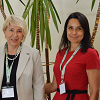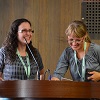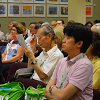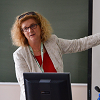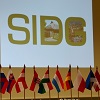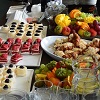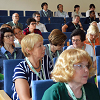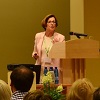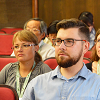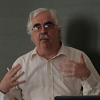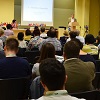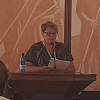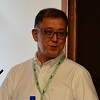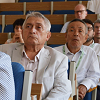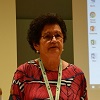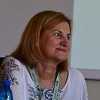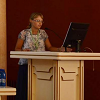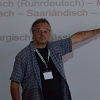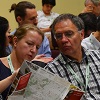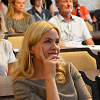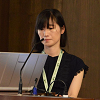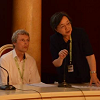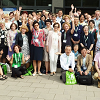
| |
| Home |
| Notice board |
| Download |
| The Society's history |
| Membership |
| Statutes |
| Officers |
| Journal DiG |
| Conferences |
| Excursions |
| Links |
| Site Notice |
University of Vilnius 2018
On 23rd July 2018, the ninth conference of the International Society of Dialectology and Geolinguistics was opened at the modern building of the Institute of the Lithuanian Language in Vilnius, the capital of Lithuania and the largest city in the Baltics.
The congress opening and the plenary sessions, with over 120 participants from almost 30 nations, were held at the conference hall and the first coffee break was immediately used to greet old and new colleagues and start the first discussions about language, dialects and plans for the next congress in 2021.
In the afternoon, busses took us to the National Museum of the Palace of the Grand Dukes of Lithuania, close to the Cathedral. Several guided tours around the large exhibition gave information about the history of Lithuania and Vilnius. The first busy day ended with the congress opening dinner at the palace.
On Tuesday and Wednesday, participants had the chance to listen to over 70 different lectures given by scholars all over the world. The topics ranged from perceptual and interlingual dialectology, literacy and deconstruction to mapping and data basis. The lectures took place in different rooms at the Faculty of Philosophy, part of Vilnius University, close to the city’s famous old town. On both days, participants could attend a guided tour around Vilniusʼ University, the library and the church.
A highlight of every congress is the excursion that gives all participants the chance to see special places, to experience local habits and traditions and to make new contacts with other scholars. This time, the program included three different places: First, we went to Rumšiškės, the largest ethnographical open-air museum in Europe, and experienced live centuries ago. This included also several stops to taste self-made bread and cheese served by friendly women in traditional clothes. While eating lunch, we were perfectly entertained by a group of folk musicians that played and sang traditional Lithuanian music. They invited us for dancing and playing instruments and made this day an unforgettable memory.
In the afternoon, we visited Trakai, Lithuaniaʼs capital in the Middle Ages, which is famous for it’s triple-windowed wooden Karaim houses and the beautifully restored castle located on a small island. Finally, our last stop was another former capital, Kernavė, first mentioned in 1279. Five hills, near to the river Neris, remind of the 13th century’s hillforts and were declared UNESCO world heritage in 2004.
On Friday, the last day of the congress, a workshop under the title of “Bridging East and West” presented five lectures about the history of dialectology in Japan that was largely influenced by Dutch scholars.
The congress closed with an evaluation and the official assembly of the Society’s members that is held every three years. All officers were confirmed in their offices and will represent the society for another three years.
Ruth van Nahl
(secretary)
Some small impressions...
